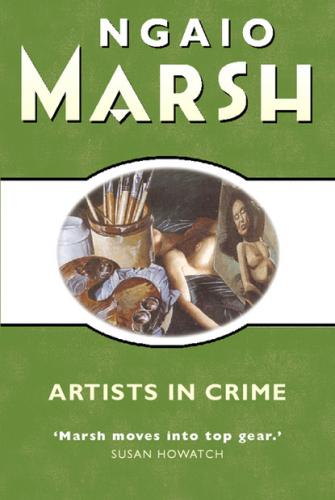Ngaio Marsh
Artists in Crime
HARPER
An imprint of HarperCollinsPublishers Ltd. 1 London Bridge Street London SE1 9GF
Published by HarperCollinsPublishers 2009
Artists in Crime first published in Great Britain by Geoffrey Bles 1938
Copyright © Ngaio Marsh Ltd 1938
Ngaio Marsh asserts the moral right to be identified as the author of these works
A catalogue record for this book is available from the British Library
All rights reserved under International and Pan-American Copyright Conventions. By payment of the required fees, you have been granted the non-exclusive, non-transferable right to access and read the text of this ebook on-screen. No part of this text may be reproduced, transmitted, downloaded, decompiled, reverse engineered, or stored in or introduced into any information storage and retrieval system, in any form or by any means whether electronic or mechanical, now known or hereinafter invented, without the express written permission of HarperCollins ebooks
HarperCollinsPublishers has made every reasonable effort to ensure that any picture content and written content in this ebook has been included or removed in accordance with the contractual and technological constraints in operation at the time of publication
Source ISBN: 9780006512561
Ebook Edition © SEPTEMBER 2009 ISBN 9780007344444
Version: 2019-01-16
For Phyllis and John
Table of Contents
CHAPTER 8 Sidelights on Garcia
CHAPTER 9 Phillida Lee and Watt Hatchett
CHAPTER 10 Weekend of an Engaged Couple
CHAPTER 11 Ormerin’s Nerves and Sonia’s Correspondence
CHAPTER 12 Malmsley on Pleasure
CHAPTER 14 Evidence from a Twig
CHAPTER 15 Lady of the Ensemble
CHAPTER 17 The Man at the Table
CHAPTER 19 Alleyn Makes a Pilgrimage
CHAPTER 21 Epilogue in a Garden
Alleyn leant over the deck-rail, looking at the wet brown wharf and the upturned faces of the people. In a minute or two now they would slide away, lose significance, and become a vague memory. ‘We called at Suva.’ He had a sudden desire to run a mental ring round the scene beneath him, to isolate it, and make it clear, for ever in his mind. Idly at first, and then with absurd concentration, he began to memorize, starting with a detail. The tall Fijian with dyed hair. The hair was vivid magenta against the arsenic green of a pile of fresh bananas. He trapped and held the pattern of it. Then the brown face beneath, with liquid blue half-tones reflected from the water, then the oily dark torso, fore-shortened, the white loincloth, and the sharp legs. The design made by the feet on wet planks. It became a race. How much of the scene could he fix in his memory before the ship sailed? The sound, too—he must get that—the firm slap of bare feet on wet boards, the languid murmur of voices and the snatches of song drifting from a group of native girls near those clumps of fierce magenta coral. His smell must not be forgotten—frangipanni, coconut oil, and sodden wood. He widened his circle, taking in more figures—the Indian woman in the shrill pink sari, sitting by the green bananas; wet roofs on the wharf and damp roads wandering aimlessly towards mangrove swamps and darkened hills. Those hills, sharply purple at their base, lost outline behind a sulky company of clouds, to jag out, fantastically peaked, against a motionless and sombre sky. The clouds themselves were indigo at the edges, heavy with the ominous depression of unshed rain. The darkness of everything and the violence
